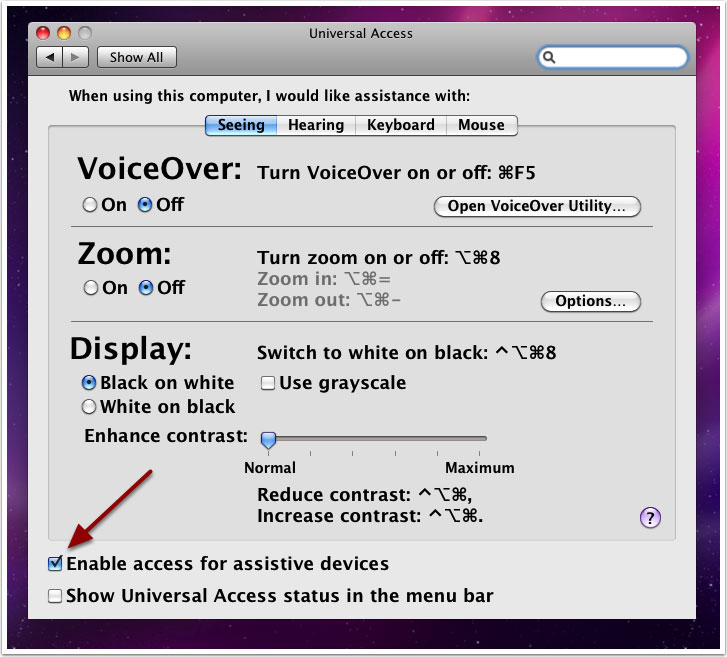

- #Mac high sierra enable access for assistive devices how to
- #Mac high sierra enable access for assistive devices password
This comes in the form of a doll-up dialog box with the message “AppName wants to control this computer with accessibility features. Most applications that want to access the Tools panel will ask for permission on first start.
#Mac high sierra enable access for assistive devices how to
How to Control which apps have assistive access in Mac OS X If you see something in this list that you don’t want, or if you don’t see an app that you do want assistive access to, you can easily control both, which we’ll cover next. As mentioned above, this can access it camera, microphone, screen, keyboard, or other similar features of a Mac. The list displayed shows exactly which apps can control the Mac using the supporting devices feature set. (Note that older versions of Mac OS X can find this setting in System Preferences> Universal Access> by checking “Enable access for assistive devices”)
#Mac high sierra enable access for assistive devices password

For privacy reasons, OS X does not allow third-party applications (such as TextExpander) to log keystrokes, unless access for assistive devices is turned on. On 10.8 and lower I was using following Applescript to enable access for assistive devices: tell application 'System Events' if UI elements enabled is false then set UI elements enabled to true end if end tell.

I want to enable access for assistive devices programatically on 10.9. Due to its widespread usage, many users may require auxiliary devices and apps, but what was once called “Auxiliary Devices” and controlled in the Universal Access / Accessibility Control Panel has since moved to a new common location in macOS. Although it is primarily considered accessibility feature, it is also commonly used for general purpose apps, ranging from screen sharing features, to apps that require microphone access, to even web browsers and many popular games. Tools and supporting apps are applications and accessories that can control parts of the Mac and MacOS outside the normal range of app limits. So after a lot of requests from our users here is a guide about How to Enable & Control Access for Assistive Devices & Apps in Mac OS. Check tutorial of How to Enable & Control Access for Assistive Devices & Apps in Mac OS


 0 kommentar(er)
0 kommentar(er)
